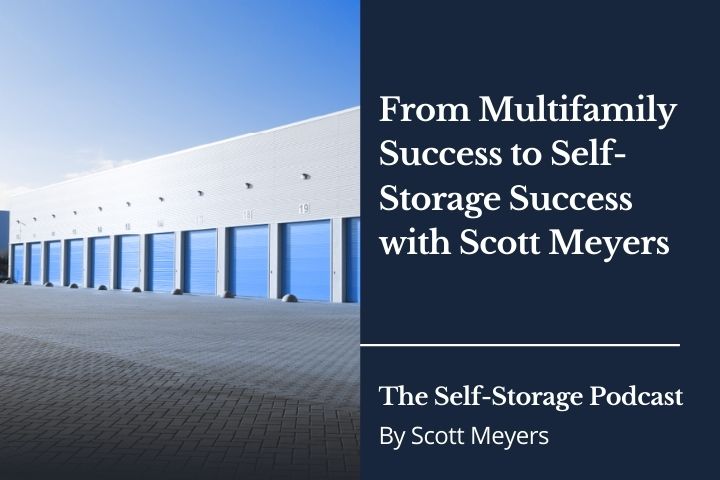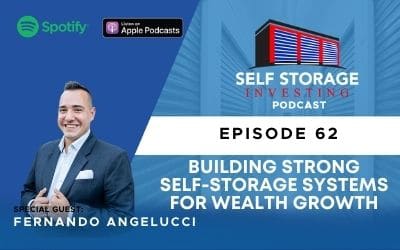About 15 years ago Travis Smith went on a fishing trip with his brothers. They couldn’t actually afford to go on the trip, but they went.
They talked about financial freedom and collectively expressed the path each brother was on wasn’t going to get them there. They wanted to invest in real estate, in private markets, but didn’t know how to start.
So, the brothers committed to starting an LLC, opened up a business bank account and began with just $500…
WHAT TO LISTEN FOR
- Why crowdfunding wasn’t the answer
- Why Tribevest focuses on the passive investor
- What is the Super LP?
- Introducing Fund Manager Tribe
ABOUT TRAVIS SMITH
Travis is the Founder and CEO of Tribevest, a platform that makes it easy and safe to invest as a group and do deals together. He started his career with Morgan Stanley but realized the most direct path to wealth and financial freedom wasn’t through Wall St or as an individual. The path is as a group, as a tribe. Travis is obsessed with building a platform that standardizes, streamlines, and ultimately de-risks group investing.
CONNECT WITH TRAVIS
- Facebook – https://www.facebook.com/tribevest
- Twitter – https://twitter.com/tribevest
- IG – https://www.instagram.com/tribevest/
- LinkedIn – https://www.linkedin.com/company/tribevest
- LinkedIn: https://www.linkedin.com/in/travissmithmovethechannel
- Website: https://www.tribevest.com/pro
- Video: https://youtu.be/Jw-EzSXZNgs
CONNECT WITH US
- Website: https://www.selfstorageinvesting.com
- Facebook: https://www.facebook.com/selfstorageinvesting
- Twitter: https://twitter.com/SelfStorageGuy
- LinkedIn: https://www.linkedin.com/in/scottameyers/
- Youtube: https://www.youtube.com/user/SelfStorageInvesting
- Instagram: https://www.instagram.com/self_storage_investing/
Follow so you never miss a NEW episode! Leave us an honest rating and review on Apple Podcast.
Click here to sign up for our Self-Storage Mastermind. Community. Capital. Deal Flow.
Episode Transcript
Travis Smith (00:00):
The question was how do we leverage Travis? All those tools that you have, you’ve made it easy to file your L L C, get your EIN, open up your business bank account. Your big problem that you’re solving in the market is how do you get investors to all come together on one platform?
Self Storage (00:31):
This is the Self-Storage podcast where we share the knowledge and skills from the industry’s leading investors, developers, and operators to help you launch and grow your self-storage business. Your host, Scott Meyers, over the past 18 years has acquired, developed, converted and syndicated nearly 5 million square feet of self-storage nationwide with the help of his incredible team at selfstorageinvesting.com, who has helped thousands of people achieve greatness in self storage.
Scott Meyers (01:06):
Hello everyone and welcome back to the Self-Storage Podcast. I am your host, Scott Meyers, and on today’s episode that we have none other than Mr. Travis Smith, who is the CEO of Tribevest. Now Travis and I met at an event full with a room full of passive investors, and this is what he does and what they do at TribeVest, which as you can imagine, it’s a tribe of folks that are investing together. And so today’s episode we wanted to do a little deeper dive into the passive side of investing in self-storage and or in commercial real estate, looking at another angle, another way that if you are interested in moving towards the passive side in addition to what you’re already doing on the active side of investing, or if you just decided that you don’t want to take on the lease up risk or a development risk of taking on a project yourself in these the times that we find ourselves in right now, then doing so in a community or with a tribe of folks has many, many benefits. So with that, Travis, say hello to Storage Nation. Welcome to the show.
Travis Smith (02:07):
Thank you Scott. Hello, Storage Nation. Really glad to be here. Been looking forward to this, Scott, thanks again.
Scott Meyers (02:14):
Well glad that we were finally able to connect to on the podcast. So Travis, I saved the introduction of yourself and your company and your story for yourself because you tell it better than I can. So tell Storage Nation a little bit about him, how you started Tribe Vest and where that passion came from to grow this incredible community that you have.
Travis Smith (02:35):
Awesome. Yes, thank you. And again, Travis Smith, founder and CEO of Tribe Vest. And let’s see if I think about the real origins of Tribe Vest, which is a platform that makes it easy, safe and transparent to come together with your tribe, with your community, with your group, to be able to formalize an entity, pull your capital, open up a business bank account and invest together. That’s what the platform does. And if I’m thinking about the origins of it, it goes way back before the company started and it was 15 years ago and my brothers and I were on a fishing trip that we couldn’t afford. And on that fishing trip, we were talking about financial freedom and where we were in our lives and our career and what was important to us. And we understood that the path we were on was never going to equate or have us reach what was our goal of financial freedom.
(03:51):
And of course we went to school, we got good grades, we got a good job, high paying jobs and income and contributing to our 401k. But again, realizing that was never going to do lead to real wealth and financial freedom. So on that fishing trip, we talked about who was living their best life, who did we know that was building wealth, had financial freedom and they were people that owned their own businesses and people that were investing in the private markets outside of the conventional and traditional. So we started talking about doing that. And of course we had all tried on our own to break in, so to speak. Of course, we weren’t taught that in school, Scott. We didn’t come from a family that invested in the private markets or real estate. So we didn’t have that know-how, where to find deals and just lacking confidence, lacking answers to the questions.
(05:00):
We had a lot of mystery and fear in terms of how do you break in? And then of course our biggest, most obvious barrier of entry was lack of capital. Again, we had good incomes and we’re putting away our 401ks and everything else, but to break into the private markets, to break into real estate, you need capital. And that’s when we had our aha moment on the river and over some beers after the fishy, the day of fishing. And we said, listen, why don’t we come together and start pulling our capital in an organized way so that we can learn in journey together and break in together. And we all knew that the only way you were really going to learn how to do this was by experiencing it. And so by that tribe we had the confidence we had an appropriate next step, which is so important.
(06:04):
We formed our L L C, opened up a business bank account and started the Pool War capital. Scott, if you can believe it, just $500 a month is where this all began. And it was four of us, $2,000 a month in all together. And by the end of the year we came across an opportunity to invest in a real estate syndication, a physician’s office in Pasadena. And we did our first deal. And then over the years, one in investment led to another, led to another, and then led to another. And by forming and funding this investor group, we all unlocked a few that none of us would’ve achieved on our own. And about five years ago people started asking us, wait a minute, you’re in what deal? And tell me more about your portfolio and your cashflow and how are you doing this? And we shared the power of the tribe, the power of your network, leveraging, harnessing your network.
(07:13):
And people started asking us, well, could you help us form a tribe? And that’s when we realized that there’s just this huge market. Of course, we were very aware of the void in the market when it came to where to go to form an investor group properly. And so with my FinTech background, my financial background, I was in a unique position to really start to connect the dots when it came to building the collaborative and financial infrastructure and platform of the private investing world. So that’s when we launched Tribe Vest, well over a thousand tribes active on our platform. Here we are. And just couldn’t be more excited about our role in helping people reach their goals and find new strategies in ways to harness and leverage their network and tribe.
Scott Meyers (08:12):
Well, like every good entrepreneur we look at to the marketplace for something and when we don’t find it, we then create it. And you’re right at the time when you launched, there was, and that leads into my next question there, crowdfunding became a thing and you could invest small amounts, but there wasn’t necessarily in some of those platforms, there wasn’t necessarily the vetting kind of the information behind that. And also some of those opportunities, well, they didn’t really represent some of the larger opportunities and dare I even say, better opportunities out there than when you get into a private placement or a direct investment to when you’re pooling larger sums of money together. So tell us a little bit about that journey at that time. You kind of saw once again this gap in the marketplace and having the background that you had recognized that you could build a platform, look at it a little bit differently. How did that come about when you were looking at growing larger groups of folks with a larger amounts of dollars to fill in that chasm?
Travis Smith (09:16):
Yeah, I, so you point out some of the different, I guess peers out there, if you will, when we think of ourselves as a technology out in the investing, private investing market, and of course with the Jobs Act came a lot of different opportunity. One of them is crowdfunding. Crowdfunding, but to us it doesn’t solve the problem. What it did is it took some private assets that weren’t available and chopped them up and fractionalize them to a point that it looked a lot like investing in the stock market or a REIT. And so were you really enjoying the benefits of ownership? And the answer was no, not really. If you own such a small fraction of something, you didn’t really get to leverage the benefits of ownership. And when you have ownership, you have options. And when you have options, you have freedom. And so our mission, our purpose out there is really to help people take ownership and realize the benefits that come with that. The other problem with crowdfunding, it’s not that we love this idea of taking a investment opportunity and putting it in a accessible way. So all about that I think have, where I think it falls short is only a certain portion of deals out there end up going that route. So you have to wonder how many other deals are out there versus just participating in the ones that are on the crowdfunding platform.
(11:27):
But again, we’re all about accessibility. We love it and it has, it’s an awesome application, but with Tribe Vests, it’s more about empowering the investor to come together. And then we don’t host deals on our platform. We don’t make money on deals, we don’t recommend deals. All we’ve done is given you a place to form your entity, pull your members pull, open up a business bank account, keep track of your cap table operate, and then go out and participate in the best deals. Of course, Scott, the best deals are the ones that you’re familiar with. They’re the ones you’ve researched, they’re the ones that are in proximity to you, they’re the ones that you’re the most passionate with. They’re the ones that you have people and trust that are experts in it. And by being able to form a tribe, you can now access any deal out there in the market as long as you’re networking towards it in the communities and finding those deals, which is more accessible than ever. Not because a tribe vest, but because of communities like yours and Storage Nation. That’s where the access comes from. We’re just one more strategy on how do you participate in a bigger way, how do you negotiate better terms? How do you empower your investor network to participate in your syndications?
Scott Meyers (13:06):
So now I’d like to ask these questions in two different directions from the passive investor. So the folks that are looking to get into some of these projects, they know that there’s a $50,000 minimum and maybe they only have 10 or maybe they’ve got the funds, but they want to spread that across multiple projects and they would rather do this with some friends and family and bring them a along. Tell me what the benefits are and how they go about doing that on your platform.
Travis Smith (13:36):
Yeah, absolutely. Great question. And I think of when we think of where we sit in the ecosystem, we bring unique value to the passive investor, we bring it to the capital raiser and we bring it to the end main sponsor, syndicators. So we can always kind of go back to, wait, who are we talking about here? In this case, the limited partner, the passive investor, you mentioned it, it’s a great fit. And you think about my brothers and I, we wanted to participate in deals and I wasn’t necessarily in a position or wanting to write 50 K cheques or a hundred K cheques. So what I did was I continued to put into our tribe and then we could go out as a group and participate in deals where I owned, I wasn’t writing the 50 K cheque or a hundred K cheque, but I was in for a quarter of that. And it made it more accessible. I could participate in more deals. I was with my tribe, we were all looking at the same deal doing our due diligence and just having confidence and Scott like writing a hundred k cheque.
(15:04):
So to be able to do it in a group think collaborative way was super important. And you mentioned again, the benefits, being able to diversify across different investments, get to know new sponsors and new asset classes. So I know a ton of people in multifamily, they’re curious about self-storage, but I’m not as familiar. I’ve kind of learned and know and have built relationships with the multifamily syndications and sponsors. How do I start to get more involved and learn about the self-storage space? Well, forming a tribe and participating with a couple of different, in a couple different deal deals is a great way. So the idea of participating more deals and diversifying. And then Scott, the other thing is how do I participate at bigger levels? So we can come in at a hundred cake, but that’s the minimum. How do I get at a half a million and reach some preferred terms? And if me and my four friends are all looking at the same deal, we all want to participate in the same deal, let’s go back to the sponsor in which we’ve made a relationship with and say, Hey, what if we wrote a half a million dollar cheque? Do we get special terms? So that’s what we call the super super LP. The super LP is also a fantastic and popular application for Tribe Vest.
Scott Meyers (16:50):
And we love that we’ve seen it in the marketplace. And whether it was a group of investors that decided that hey, they could either take advantage of an offering that a syndicator was offering a one level or a two level, however you want to look at it with a juiced return to it, or to be able to pull that money together or folks together and then go back to the sponsor and say, Hey, is it too late to either amend your operating agreement or create a second class of shares? If we come in at this level, it’ll shorten your timeframe to close on the project because we can bring X amount of capital. So it’s that filling that gap between an LP and a fund of a fund, which is larger dollars, but just to come in between there a and there is the, there’s room for everyone.
(17:35):
And at the end of the day, as long as we get these deals across the finish line and everybody wins and making it as frictionless as possible, we are thankful for Tribe vest In doing so. I’m putting on my syndicator hat on now. I I’m raising capital, I am the capital raiser slash syndicator of both. And so I’m going to introduce my database of limited partners to the concept of Tribevest. And let’s say I’m going to hold either a special webinar or I’m going to host an article or post a vlog on what does it look like to use tribes to energize my LP database, to invest in our projects and to be able to raise capital faster and with obviously fewer investors and be able to do so in our projects. What is that message? What is the best way for me to be able to do that and introduce what Trista is and would do for me as a syndicator to my database of LPs?
Travis Smith (18:31):
A absolutely. So a webinar or a conference, I know you have a conference coming up and talk to Cheryl and it sounds like I’ll have this opportunity to get to meet a lot of the storage nation, which is amazing. And so I don’t have to stretch my imagination too much to think about what would be the message there. And I think whether it’s a webinar or a conference to invite in your network as a syndicator network of capital raisers and limited partners. And because we have something for both of them that empowers them and really empowers empowering your network is what trivest helps to do. And we already talked about from a limited partner perspective, those applications, that idea of that super limited partner or forming a tribe to participate in your first deal with a syn new syndicator or whatever it is, those are fantastic applications and we’ve built them to be turnkey.
(19:51):
We call those our tribe vest pro tribes, and they come with services wrapped around it. So we have our platform and now with a champion who’s leading that, they can come in and we make this really easy to file your llc, open up your business bank account, get your e i n manage your cap table, get your five investors or whatever it is to come in and then wire those funds. And then once distribution start coming, tribe Vest has an offer, a service where we’ll help distribute those distri, those distributions. So if there’s distributions coming into the single entity, this extra layer of service says, Hey, we’ll based on your cap table, we’ll help you distribute those distributions to your membership. And then same thing with the K one s. So the sponsors love us, right? Because we’re one investor and there’s a lot of admin people wonder, Hey, why are the minimum so high?
(21:04):
And the answer is, it’s a lot of work with each new investor you bring in. So with a super LP Pro tribe, you can get that one K one and then Tribe Vest as a service distributes the five K one s to each one of those members in the tribe. So that’s just a fantastic application. It’s a business partnership. You’re active members of the tribe and it’s governed by an operating agreement. We give you all the tools you need to make sure that you’re operating a partnership of active members and make it really easy. But I’m really excited to share with you and I’ll take a breath, but we’re, we’re just now rolling out what is our fund manager tribe, and this is going to be a game changer, Scott, and you’re one of the first people introducing this to, so anyway, let take a breath.
Scott Meyers (22:08):
I’ve been hounding you since the last time we got together as to when it was coming out. So I’m thankful that we’re having this call and everybody can participate and share it here as well.
Travis Smith (22:18):
Awesome. Yeah, I’m thrilled about this. So as I just described, not that we weren’t game changing because we have changed the game with everything I’ve talked to about till this point, but the question was how do we leverage Travis, all those tools that you have, you’ve made it easy to file your L L C, get your e i n, open up your business bank account. Your big problem that you’re solving in the market is how do you get investors to all come together on one platform, make it easy for them to sign the docs and set up the cap table, do distributions, taxes, you’ve done all those things. But as we know, important part of the ecosystem is the fund managers and the fund of funds, and we’re just so excited to announce the fund manager tribe. So what we’ve done is with our S E C attorneys and we’ve now the first in the market to combine not only the operations, which is what we’ve been talking about, but the legal side of it, and we’ve integrated those into a real turnkey solution at a price point that’s really, so for $5,000, you can come in, start your tribe, build your ppm, your operating agreement, your subscription docs, we help you with all the filings all the way along the way.
(24:04):
And of course all those other great services we’ve talked about in terms of managing your investors. And we we’re able to do that by making it really focused and configurable. But again, very, it has to be the right fit for you and that’s how we’re able to offer it at this cost and this level of efficiency. But yeah, it’s a game changer and I think what we’re doing is we’re working with a lot of sponsors and they can’t wait to introduce us to their capital raisers.
Scott Meyers (24:44):
Well, that is the natural progression. Once you begin life as a syndicator, first of all, you recognize that eventually you run out of cash, your own cash, your own retirement account. If you can invest that and your growth is limited to by the amount of capital, the fuel that fuels this investment business to begin with. And so you learn to raise capital and so you hire the attorneys, you pay for the docs, the ppm, the operating agreement, and maybe you’ve read a book on how to raise capital, but then you close on the project, you raise enough capital, you get the loan, and now you need to grow the NOI and produce those returns to your investors. But how do we manage our investors? Because our limited partners, they like to know what’s going on with their money and their investment. They want to know you are moving the needle on the investment and creating the value that you stated you would in your PPM and on your webinar.
(25:38):
And they want to see the financials. They want a monthly report of financials and they want a quarterly webinar. They want to make sure that they’re, the bookkeeping is shared with them and the p and l and that their K one s arrive on time. Very, very important. So that is the fund management on the backend. And that is a piece that I think many syndicators, they don’t do it very well in the beginning or maybe it’s an oversight and in some cases they don’t do it all until their investors start screaming. And that is not the time to try to figure it out because the idea behind growing a tribe or a group of passive investors who invest with you over and over again is to create just that a great experience, an over the top, a wow experience. And it’s not just returns, but it’s communication with them as well. That is more important than anything. Integrity is the most important. And when it passive investors are LPs are looking at a sponsor and then communication follows right behind that. And so by having a platform now that where you can handle all of that to not only the capital raise itself, but then the fund management, which is the incredible, the most amount of detail in what is the hardest to build on behalf of syndicators out there nationwide. We thank you Travis, for finally coming out with that project that handles it from front to back.
Travis Smith (26:56):
Well thank you. And again, the way we’re able to do this and the way we’re able to do this is really offering in a very narrow scope. And so it’s not going to be the fit for everybody, but it will be a fit for a lot. No, a lot of people, and one of the way we see this fund manager tribe fitting is not necessarily with the lead syndicator per se. So the one that’s doing the operations and everything, there’s a lot of moving parts there, there’s gps and so that they’re probably going to continue to work with your attorney there, which gets into 20, 15, 20, I mean thousands of dollars. And that’s all necessary because of the complexities that come with that as the main lead sponsor of a project. So we’re less providing that. And look, there’s a lot of investor relations portals out there too as which we’re not more of the unsexy back office, what do you need done kind of thing.
(28:28):
What are the things that are kind of the pain in the neck? We do all those things where your investor relations portals are really built for that communication and they do offer a lot of that functionality. But where we come in this particular ecosystem is those syndicators, they have their network of limited partners and they need to take care of good care of those. And then as they continue to get successful, they find fund managers that love the deal, they want to participate in as a limited partner, but they’re saying, Hey, I actually have my own network of limited partners too could if I come in at a certain rate. And it just makes, it’s the most turnkey and safest way for the network to capital raise. And that application is perfect for us because what we’ll take is the PPM from the main syndicator. We’ll build the PPM to match that for the capital raiser and give them the tools to go out and pull their network. Now our tool is designed not for hundreds of investors, it’s designed for a tribe. So again, most this isn’t going to fit all applications, but I think you’re starting to see Scott where it does fit. And I think it’s going to be super exciting to a lot of people in your network and in the storage nation a hundred percent as they think about scaling
Scott Meyers (30:19):
Hundred percent. Well Travis, you and I have a similar task, if you will, in terms of our businesses and I think as many people do. And that is in order for people to utilize them to the fullest, they need to understand the best ways to do so and creative ways to do so. And that is educating and communicating the public at large or at least our own tribe of folks that are going to utilize our services. And so with that, what we’re doing on this end is just this, we’re holding podcasts and we’re having people come on to introduce them to different nuances of the marketplace that allows them to once again go out there and grow and scale their business. All of that layered on top of the know-how and what to do and and how to navigate the current market. And what we find ourselves in right now is and never changing marketplace.
(31:14):
We’ve had a record inflation and rising interest rates and the passive investing market. And then conversely, the syndicators, us syndicators, we are finding some challenges in having an investors that are comfortable with the marketplace, comfortable with the economy and where things are going that they’re not so apted to jump onto our syndicated projects, our LPs, rightfully so they’re waiting, are we at the bottom? I don’t want to get hop on this rollercoaster if it’s going to the bottom and then go back up. I’m going to wait to make sure that we’re at the bottom before I jump on. And so when we have uncertainty in the marketplace, it confused, mine says no, and they sit on cash. And so it is at least our responsibility to a degree to navigate through that and provide the best information as to what the lay of the land is and what people could be doing.
(32:04):
Not should be, we’re not advisors, but what they could be doing. And as we all know from an investment standpoint, more money is made when people are running into the burning building versus running out of it. And so we see that we are very bullish on storage heading into this next recession because it benefits more than any other asset class. But we never convinced anybody because a person convinced against their will is of the same opinions still, but persuading folks that sitting on the sidelines is probably not the best thing to do in an inflationary environment right now and that you should get money into play. So a long lead into my next question then, Travis, is what are you doing on your end to perhaps get more utilization or for folks to utilize your platforms and your offerings by way of your influence? What is the message that you’re sending out right now in the marketplace or the drum that you’re beating right now to get people to begin moving and get things moving along at a clip that they were say a year and a half ago?
Travis Smith (33:03):
Yeah, great question. I think I go back to my origins 15 years ago, and if you do the math, it was right during the great recession. And to your point, I don’t know if we get as far as we did as quickly as we did if we weren’t in the market at that time. And so ended up being a huge benefit to us to be an actively participating in that quote down market. So yeah, I think that’s also an important story and consistent, what are we doing? It’s it to us, it’s really about empowering those that do understand that are excited about this time and capital was pretty easy to come by the last 5, 6, 10 years. And so now that it is a little more difficult, I think there’s two things that syndicators are really concentrating on. How do I be more efficient with my investor network?
(34:24):
How do I become more efficient with that investor network? And then two, how do I do things more safely and hasn’t been in upmarket? There’s a lot of, not too many complaints out there. And so I think as people are considering where we’re at, they’re reassessing how they’re going to market, are they being efficient? How are they taking the steps to be as safe as possible in terms of just making sure you’re covering all the bases so you can move fast and you’re not wondering in saying we, or should we be doing this differently or better? And those are the two things that we’re doing. We help you offer a tool and a strategy to your investor network that makes you more efficient with that community. And then two, you just have that peace of mind that you’re covering all your bases and giving you the ability to run with confidence. So those are the things that we’re really kind of focusing on at this stage in the current cycle.
Scott Meyers (35:54):
And I would agree, I’d say that those are the same things that we’re doing right now, which is more of the basics, digging in a little bit further and understanding what things look like. We’ve got our ear to the ground, nobody can ever guess in a recession which way the market’s going to turn because it is really based on consensus and confidence of the investors. And it could be anything that spooks folks. And then it is a herd mentality as we’ve seen over and over again. So it is for us as investors buying projects and properties, we are looking at the same pieces of data and then relaying that to again, our group of LP investors that want to come alongside of us and if we have that confidence and that hopefully that comes through on their end as well. Travis, we are nearing the end of our time here and we can certainly talk for hours on.
(36:42):
Well, my favorite topic, which is of syndicating real estate, and I imagine one of yours is as well. But what I’d like to do is leave our folks with this and that you’ve been through a couple of different cycles. You’ve been on both sides of these projects. And I’d say, what is the greatest lesson you’ve learned? And that could come by way of a mistake or something you’ve seen or something an and investors may have run across that was a lesson learned that you implemented and then made your tribes aware of as well. But what are some of the things that maybe the greatest lesson you’ve learned, maybe the greatest mistake that was made and a gotcha that people should be looking out for in today’s environment?
Travis Smith (37:25):
Yeah, I’ll probably, I’ll highlight something that was a little bit of dumb luck and the benefit of the tribe that you don’t think about. But I think in any time, but especially this time, it’s important to have your principles, your values and discipline and discipline. And what the tribe represented for us was that we were going to continue to explore and learn about the market, how to build wealth, how to invest. And that doesn’t mean just during the good times. That means how do we become good strong investors at during any time. And so that was our commitment, that was our value, those were our principles. And the tool that gave us the discipline was the tribe. So we were committed to this. And look, I think if you looked at the way I was investing as an individual, I probably was part of the herd.
(38:47):
But when I was with my tribe, I remained disciplined, I remained disciplined and benefited greatly from that. So I think as we’re all advocating here, I think it is important that we do stay disciplined and should we all be in a tribe? I don’t know. The way I look at it is I think about 15% of your capital should be invested with your tribe because of what it represents. Diversity group think bunch more due diligence, looking at it from different angles and that discipline of putting capital in and continuing to participate in the market. So discipline I think is the big, I think lesson for the times.
Scott Meyers (39:44):
Yeah, I would agree. And we begin to stretch ourselves, which is good to be able a little more creative. But then when we start to stretch ourselves beyond what are our core disciplines, that that’s when we get in trouble. So making sure that those parameters are put in place. We have guardrails and we stick to ’em, and we make sure that we have somebody who is keeping us accountable to them, which is typically the other folks in our C-suites at the executive level of our organization. But beyond a shadow of a doubt, I think the greatest mistake I ever made is because I begin to, I had goals that I wanted to reach, and if I wasn’t reaching them, then I would go back and look at those deals that maybe weren’t so good a deals and dust off the underwriting and make ’em work.
(40:23):
And that was the wrong approach to take. So a disciplined approach is absolutely the way to go. Well, Travis, with that, my friend, once again, it’s so good to spend time with you and our time is always short when we’re talking about this topic and also in our conversations, but looking forward to hosting you at the Self Storage Mastermind, coming up in a keystone where you will be on at the main stage and doing an even deeper dive with the group with regards to what and how we approach the market right now utilizing the tools or resources that you’ve provided to the market. So cannot wait for that.
Travis Smith (40:59):
Scott, I’m looking forward to it. Such a pleasure. Thank you for having me.
Scott Meyers (41:03):
All right, good seeing you again, Travis. Take care.
Travis Smith (41:06):
Take care.
Self Storage (41:13):
Hey gang, wait three things before you leave. First, don’t forget to follow the Self Storage podcast and turn on your notification so you never miss another episode. And while you’re there, please leave us a five star review if you like the show. Second, be sure to share your favorite episodes and more via Instagram, and don’t forget to tag us. And lastly, head to the links in the show description and hit follow on Twitter and Facebook to get a front row seat as we grow and scale our business and bring you along with us.















